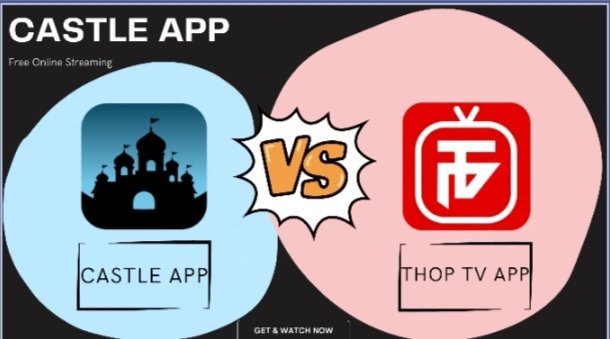Introduction to Rice Purity Test
The Rice Purity Test has become a cultural phenomenon among college students. This test, a seemingly harmless list of 100 questions, is designed to measure one’s “purity” based on their life experiences. Though it started as a fun way to break the ice in social settings, the Rice Purity Test has evolved into a viral trend, with people worldwide participating and sharing their results. But what exactly is the Rice Purity Test, and why has it gained such widespread popularity?
In this article, we’ll delve into the history, significance, and implications of the Rice Purity Test, exploring what your score might say about you.
What is the Rice Purity Test?
The Rice Purity Test is a self-graded survey consisting of 100 questions that cover a wide range of life experiences, including those related to personal habits, relationships, substance use, and more intimate activities. The test is named after Rice University, where it was created as a way for students to bond and learn more about each other’s backgrounds.
Participants answer each question with a “yes” or “no,” and the total number of “yes” responses determines their “purity score,” which is typically expressed as a percentage. A higher score indicates more significant “purity” or fewer life experiences in the areas covered by the test.
History and Origins of the Rice Purity Test
The Rice Purity Test was first introduced in the 1980s at Rice University in Houston, Texas. Students created it as a light-hearted way to foster connections among peers during orientation week. The original intention was to help students break the ice and discuss their different experiences in a nonjudgmental environment.
Over the years, the test has evolved and spread far beyond the confines of Rice University. With the advent of the internet, the test became accessible to anyone, anywhere, and has since been taken by millions of people around the globe.
How Does the Rice Purity Test Work?
The Rice Purity Test is straightforward: participants go through a list of 100 questions and mark each one “yes” if they have experienced it or “no” if they have not. The questions range from simple activities like “Held hands romantically?” to more intricate encounters such as “Were you called by the police?”
After answering all the questions, participants tally up their “yes” responses. The final score is calculated by subtracting the number of “yes” answers from 100, resulting in a percentage score. For example, if you answered “yes” to 40 questions, your purity score would be 60%.
Significance of the Rice Purity Test
The Rice Purity Test serves various purposes depending on who is taking it. For some, it’s a fun and nostalgic way to reflect on their past experiences. Comparing life experiences with friends or peers is a social tool for others. The test also often serves as a conversation starter in social groups, especially in college settings.
While the test is intended to be light-hearted, it’s important to note that it can also reflect societal norms and pressures. The questions touch on topics that are often considered taboo, and the score can sometimes be used to judge others’ behavior, which can lead to misunderstandings or negative feelings.
What Does Your Rice Purity Score Mean?
Your Rice Purity score reflects the number of life experiences you’ve had, as defined by the test. A higher score, closer to 100, suggests that you’ve had fewer experiences in the areas covered by the test, while a lower score indicates a more significant number of experiences.
It’s crucial to remember that the Rice Purity Test is not a scientifically validated measure of “purity” or morality. The test should not be taken too seriously because it is only meant to be entertaining. Different people have different life paths, and no “correct” score on the Rice Purity Test exists.
Why Has the Rice Purity Test Become So Popular?
The Rice Purity Test’s popularity can be attributed to several factors:
- Nostalgia: Many people enjoy taking the test to reminisce about their youth or compare their college experiences with those of others.
- Social Media: The test has gained significant traction on platforms like TikTok, Instagram, and Twitter, where users share their scores and challenge friends to take the test.
- Curiosity: The test appeals to people’s curiosity about how their life experiences compare to others.
- Accessibility: The test is easy to take and available online, making it accessible to anyone with an internet connection.
The Ethical Debates Surrounding the Rice Purity Test
The Rice Purity Test is not without controversy, despite its widespread use. Some critics argue that the test reinforces certain stereotypes and societal pressures, particularly around topics like sexual activity and substance use. Others point out that the test can perpetuate harmful ideas about “purity” and morality, potentially leading to feelings of shame or inadequacy for those with lower scores.
It’s essential to approach the Rice Purity Test critically and remember that it’s just a game. Everyone’s experiences are valid; a test score should not define a person’s worth or character.
How to Interpret Your Rice Purity Test Results
When interpreting your Rice Purity Test score, it’s essential to keep a few things in mind:
- Context Matters: Your score is just a number and doesn’t account for the context of your experiences. Life is complex, and many factors contribute to the choices people make.
- No Judgment: The test is meant to be fun, not a tool for judging yourself or others. Everyone’s journey is different, with no right or wrong score.
- Have Fun: Ultimately, the Rice Purity Test is designed to be a fun activity, so enjoy the process and don’t take the results too seriously.
FAQs
What is the Rice Purity Test?
It is a 100-question survey measuring one’s “purity” based on life experiences. It was created at Rice University as a way for students to bond.
Is the Rice Purity Test scientifically accurate?
No, it is not a scientifically validated tool. It’s intended purely for entertainment and should not be taken as a severe measure of one’s character or life experiences.
What is a good Rice Purity score?
The Rice Purity Test has no “good” or “bad” score. The score reflects the number of experiences you’ve had in the areas covered by the test.
Why do people take the Rice Purity Test?
People take the Rice Purity Test for fun and curiosity and to compare their experiences. It’s also popular on social media as a way to engage with friends.
Can the Rice Purity Test be harmful?
While the test is generally intended to be light-hearted, it can perpetuate certain stereotypes and societal pressures. It’s essential to take the test with a grain of salt and not use it to judge yourself or others.
How can I take the Rice Purity Test?
The Rice Purity Test is available online and can be taken for free on various websites. Search for it, and you’ll find a version you can take.
Conclusion
The Rice Purity Test has become a cultural staple among younger generations. While it started as a fun activity for college students, it has since taken on a life of its own, spreading across the internet and sparking curiosity and debate. Whether you’re taking the test for fun or as a conversation starter, it’s important to remember that the Rice Purity Test is just a game. Your score doesn’t define you, and everyone’s life experiences are valid. Enjoy the test for what it is—a nostalgic and entertaining reflection on our diverse paths through life.




